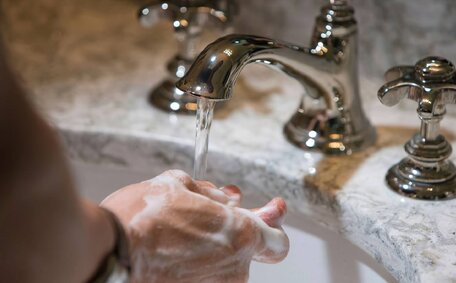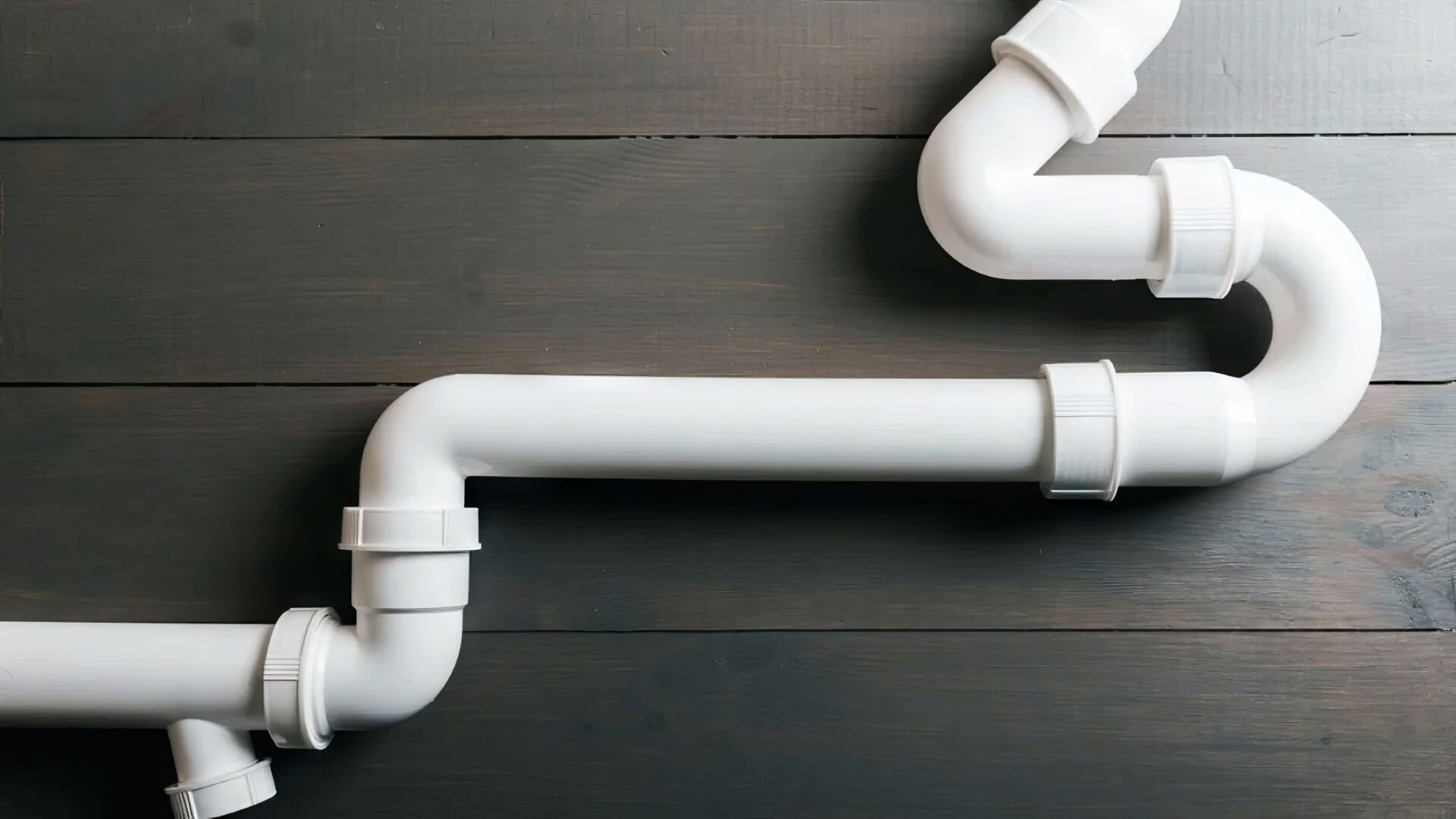Identifying Signs of Frozen Pipes
There are several key signs that may indicate you have frozen pipes in your home:
- Reduced water pressure, or a complete lack thereof at faucets, usually signals ice blockages within pipes that hamper water flow.
- If your water heater is working but there’s no hot water, it likely means frozen pipes are obstructing water circulation.
- Gurgling sounds from pipes can indicate ice forming and expanding inside them.
- Exposed pipes feeling ice-cold to the touch - Outdoor hose bibs and pipes in unheated areas like crawl spaces could be frozen.
- Frost, ice or frozen moisture on the exterior of pipes - Visual signs like this clearly show where freezing is occurring on pipes within your walls.
Noticing these warning signs early and taking prompt action to thaw pipe sections gently is critical to prevent pipes freezing that can cause them to crack and burst, resulting in water damage. Contact us anytime for help with thawing frozen pipes or if you’re concerned about potential water freeze within them - our assistance is available 24/7.
Thawing Techniques for Frozen Pipes
If you discover a pipe frozen, It’s essential to carefully and slowly thaw frozen areas to prevent pipe damage. Here are some safe DIY methods – exploring how to prevent frozen pipes in your home:
- To gently thaw pipes, use a hairdryer on the low setting or position a space heater 30-60 cm away. Monitor it closely and move the heat source around to evenly thaw all sides.
- Wrap an electric heating pad or hot water bottle around the section pipe, as it’s important to ensure your heating methods are safe for sensitive pipes. Make sure it’s loosely covered to hold in the warmth. Check it regularly so it doesn’t overheat the pipe.
- Apply warm water (avoid boiling) to rags or towels wrapped around the pipe to thaw it gently. Top up with more warm water when it cools. Take care not to burn yourself.
If a pipe burst has occurred or you can’t safely reach the frozen spot, help thaw the situation by shutting off the main water supply immediately and calling a plumber for urgent assistance. Our team has the necessary tools and expertise to expertly thaw pipes and avert serious water damage.
Using Safe Heat Sources
When thawing your pipes, do use heat sources that are safe and don’t pose risks like fire or exacerbating pipe damage. Learn more about recommended options, including:
- Heating pads - Wrap these around pipes to provide gentle warmth, knowing that frozen pipes can be vulnerable to sudden temperature changes.
- Portable heat lamp devices can be positioned 1-2 feet away to shine warmth directly on affected areas. Monitor to prevent overheating.
- Warm towels - Soak towels in warm water, wrap around spots with frozen water and replace when cooled. Ensure no extreme heat or moisture buildup.
Avoid direct high heat sources like hot air guns and never use open flames near pipes. The extreme heat can damage pipe integrity; even a single pipe can suffer from improper thawing techniques. Space heaters can be used, keeping home safety in mind, to warm up the surrounding area gently - not apply direct heat.
If you’re unsure about the heating method’s safety, contacting our team can help clarify the best approach. We’ll provide professional assistance to safely thaw your frozen pipes without risking bursts or leaks.
Preventative Measures Against Freezing
It’s good practice to Be proactive in preventing pipe freezing to circumvent the complications of burst pipes and water damage. It’s a good idea to adopt recommended measures to avoid freezing up, which can lead to a burst situation, which include:
- Insulate pipes in areas such as attics or crawlspaces using pipe wrap insulation to prevent freezing. Choose materials like fibreglass or foam sleeves specifically designed for plumbing.
- Sealing any cracks and gaps in the walls your home encloses, as well as the foundation, helps to block cold air infiltration. Apply caulk and weather stripping to minimise drafts.
- To prevent freezing, maintain a consistent indoor temperature of at least 13°C., setting the thermostat accordingly and leaving it on even when away, especially overnight. If your home older settings perplex you, consider smart thermostats for precise temperature adjustments.
- Disconnecting and draining pipes that service outside spigots and faucets and covering the taps to prevent freezing. Alternatively wrap insulation around these exposed pipes.
- Checking that all plumbing has proper ventilation so moist indoor air doesn’t penetrate and cause condensation-related ice buildup.
It’s prudent to familiarize yourself with your home’s main water shutoff valve location so you can take swift action if a pipe burst occurs. Creating an emergency plan for contacting services like a 24/7 plumber is also recommended.
Insulating Pipes
Pipe insulation is a highly effective safeguard against the occurrence of a burst due to freezing. We recommend wrapping pipes in unheated areas like attics, basements, garages, and crawl spaces with insulation specifically designed for plumbing. Fibreglass and foam pipe insulation sleeves work well and are easy to install.
Ensure both hot and cold water pipes across your home are properly insulated.
Despite being less susceptible to freezing, hot water pipes can still be affected under extremely cold conditions. Insulate the entire length of pipe that runs through unheated zones, securing the insulation tightly and sealing any gaps with waterproof tape to prevent cold air infiltration.
It also improves energy efficiency by reducing heat loss. Installing insulation is quick, affordable protection that can save you from extensive repairs when water freezes in your pipes.
Maintaining Consistent Indoor Temperature
Maintaining a steady home temperature is key to preventing pipe freezing. It’s advised to keep the indoor temperature at a minimum of 13°C during the colder months.
Keep daytime indoor temperatures at around 20°C when people are present by using your thermostat. At night or when away, do not allow the temperature to drop below 13°C (55°F). Consider installing a smart thermostat that self-adjusts to maintain ideal temperatures.
Maintain a low heating setting continuously to prevent pipes from reaching freezing temperatures. Allowing temperatures to drastically fluctuate or drop to very cold levels, especially overnight, puts pipes at most risk.
Maintaining warmth indoors means pipes stay safely above freezing point during cold snaps. Sudden cold snaps won’t impact them as severely either. Taking this preventative measure avoids costly burst repairs.
Winterizing Plumbing Systems
Preparing your plumbing system for winter is crucial preventative maintenance. Key steps include:
- Drain and disconnect hose bibs and outdoor spigots to clear water that could freeze.
- Making sure outdoor plumbing fixtures like spigots are wrapped with insulating covers.
- Having a plumber install heat trace systems, like heat tape, on pipes in uninsulated areas prone to freezing.
- Sealing any cracks and openings in outside walls or foundations near pipes with caulk/insulation to block drafts.
- Insulating pipes in unheated indoor spaces like attics and crawl spaces.
- Checking antifreeze levels in irrigation systems.
Taking these winterizing precautions can reduce the risk freezing weather poses to your pipes. We’re happy to help with any plumbing preparations needed to protect your property during cold weather months.
Handling Burst Pipes
Immediate action is vital upon discovering a burst pipe in your house to curtail water damage. As soon as possible, locate and turn off the main water shutoff valve, which your home can provide easy access to. This is usually near the water metre or where the water supply enters the home.
Turning off the main valve helps stop your home’s water flow, preventing flooding from the burst pipe.
After shutting off the main valve, turn off all taps to drain pipes, reduce pressure, and then seek immediate plumbing assistance. Inspect rooms with plumbing fixtures for damage that might indicate frozen pipes elsewhere. Pay special attention to rooms on the lowest floor where flooding may collect.
Use towels to cover the area around the burst pipe to soak up water. Place a bucket underneath to catch drips. Contact our 24/7 emergency plumbing team and we will despatch a technician promptly to handle repairs.
Understanding what to do when a burst pipe occurs is pivotal in limiting damage your property may suffer. Our technicians have extensive experience with burst pipe situations to get your plumbing restored safely and efficiently.
Shutting Off Main Water Supply
Knowing how to shut off your main water supply is critical in the event of an emergency like a burst pipe. Here are the key steps to take to shut off water:
- Locate the main water shutoff valve for your home. You should know where it’s found, typically near where the water line enters your home, be it the basement, garage, crawl space, or a closet.
- The main valve, typically a knob, lever, or wheel, should turn freely; test it before emergencies. You may need to spray it with lubricant if it’s stuck.
- To turn off the water, simply turn the valve a quarter turn so it’s perpendicular to the pipe. You’ll know it’s closed properly when the valve handle crosses the water line.
Once the main water line is shut off, individual fixture valves can also be closed for extra precaution. Mark the location of your home’s shut off valve so it can be easily accessed by family or emergency workers if needed.
Knowing how and when to shut off your main water supply is one of the most useful things any homeowner can learn. It limits damage from burst pipe flooding and allows for safer plumbing repairs.
Contacting a Professional Plumber
If you are unable to safely thaw or repair burst pipes yourself, it’s crucial to call your plumber for professional assistance. At Lalor Park Plumbing, our team of fully qualified technicians is available 24/7 to provide emergency response.
When you call our office at 1300 349 338 or email [email protected], we’ll despatch an experienced plumber to assess your situation. We carry out thorough repairs and replacement of damaged pipes and can also assist with contacting your insurance company to potentially cover costs.
With extensive training in safely thawing frozen pipes, clearing blockages, and stopping water damage, our plumbers have the necessary expertise to resolve burst and frozen pipe emergencies. We utilise commercial-grade equipment for leak detection, pressure testing, drain cleaning, and excavation work if required.
Don’t attempt complex plumbing repairs yourself – getting professional assistance promptly is vital to prevent further issues. Our reliable emergency services offer peace of mind that your plumbing will be restored safely and efficiently. Contact our team anytime when experiencing frozen, burst, or leaking pipes.
Ongoing Pipe Maintenance Tips
Conduct monthly inspections of all exposed water pipes for signs of wear, leaks, corrosion, and freezing risks.
Implementing regular pipe maintenance is vital for preventing freezing issues and burst damage.
They can evaluate pipe insulation, diagnose leaks, and ensure safety devices like pressure relief valves are working properly.
Install heat trace cables on pipes that are likely to freeze for added protection.
Monitoring your plumbing during seasonal changes lets you be proactive against freezing pipes. Good pipe insulation, draft sealing, and stable indoor temperatures are crucial for lasting protection. Reach out to us for expert assessments and maintenance services to ensure smooth plumbing operations throughout the year.






